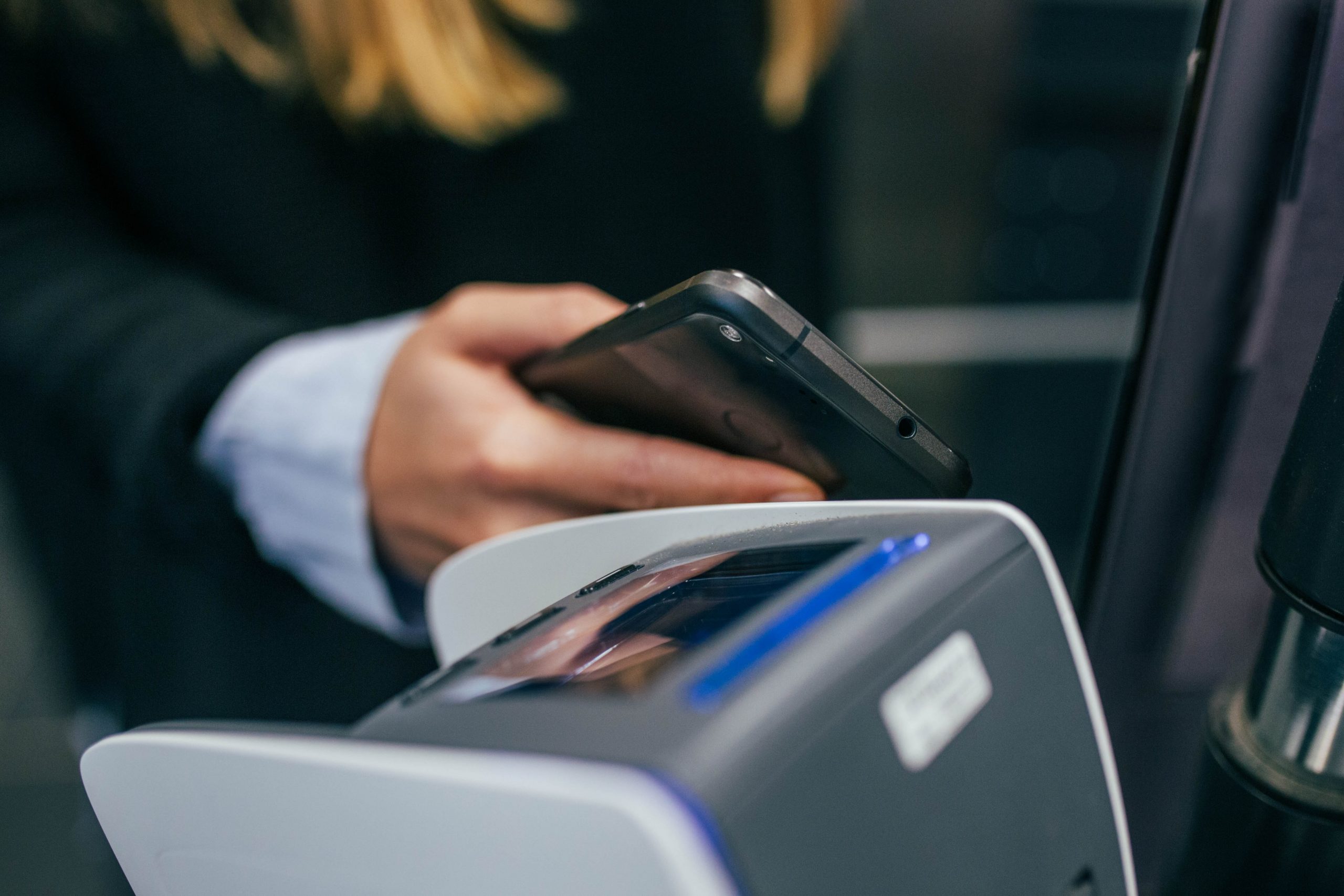
20+ Insightful Mobile Payment Statistics
The ability to make mobile payments has been around for a while, but the technology didn’t really take off until the last couple of years. It has taken a long time for people to get used to the idea of tapping their phones on a POS to pay. Up until now, credit or debit cards were the go-to tools.
As the following mobile payment statistics 2020 show, things are changing. Future trends for mobile payment reveal that the market is set to go mainstream. By the end of the coming decade, it will almost certainly be the dominant form of payment.
Take a look at the following:
Incredible Digital Wallet Statistics (Editor’s Choice)
- 64 million people in the US made a mobile payment in 2019.
- 36.3% of smartphone users will make a mobile payment at least once every six months, and most of these people will be in Asia-Pacific and China.
- 33% of businesses plan to add or increase support for mobile payments
- Mobile wallets are predicted to surpass the use of credit cards by 2023.
- 30% of Gen Z say they never use a digital wallet.
- 37% of merchants already support mobile payments at point-of-sale.
- 58.4% of US smartphone users who had made a mobile payment in the last 12 months were women.
- With 23 million users, Starbucks is the most popular mobile payment app in the US.
Digital Wallet Usage Statistics
Here are some statistics that show how much people now rely on their digital wallets:
1. 64 million people in the US made a mobile payment in 2019.
(eMarketer)
Mobile payment usage in America grew by more than 9.1% between 2018 and 2019. Emarketer estimates that more than 64 million people made a mobile payment at least once in the year. This figure amounts to around 29% of all smartphone users.
2. The global mobile payments market hit $897.68 billion in 2018 and is forecast to grow further.
(Market Watch)
Global mobile payment trends forecasting from Market Watch suggests that the total global payments market was worth around $900 billion in 2018.
But if you think that’s massive, check this out:
It will skyrocket to a mind-blowing $3695.46 billion by 2024! The data implies a compound annual growth rate of nearly 27% over the coming four years.
3. 36.3% of smartphone users will make a mobile payment at least once every six months, and most of these people will be in Asia-Pacific and China.
(eMarketer)
Proximity mobile payments statistics from eMarketer suggest that more than one-third of smartphone users globally (particularly in China and the Asia-Pacific region) will make proximity payments with their phones this year. Mobile payment transaction stats show that Samsung Pay, Apple Pay, and Google Pay are all the big winners in this new market.
4. The global share of mobile payments is forecast to hit 28% by 2022.
(Merchant Savvy)
Trends for business mobile payment suggest the main loser will be cash, which will see its share of the transaction market fall from 27% globally today to just over 17%.
5. 33% of businesses plan to add or increase support for mobile payments.
(Merchant Savvy)
Data from Merchant Savvy suggests that one-third of US companies plan to increase their support for mobile payments at their POS terminals.
6. 39% of people said that they would use mobile payments more often if more shops allowed it.
(NFC World)
How often mobile payment is used depends very much on merchants’ willingness to accept it. Data from NFC World suggests that consumers would be more willing to use it if more stores were more accommodating.
Mobile Payment User Statistics
Mobile payments user statistics give us a sense of who is using these services and the rate at which they’re growing.
7. The user reach of mobile wallets is predicted to surpass the use of debit cards in 2023.
(Merchant Savvy)
The notion that mobile wallets would be popular if shops just accepted them appears to be true. Data from Merchant Savvy suggest that mobile payment methods have already surpassed the popularity of credit cards and will exceed that of debit cards within the next three years.
8. 54.8% of US smartphone users who had made a mobile payment in the last 12 months were women.
(Statista)
Mobile payment gender statistics from the US reveal that women are more likely to make payments on mobile devices than men. It would be interesting to observe whether this ratio changes as the method continues to gain in popularity.
9. 42% of US travelers said the ability to pay with Apple/Android Pay while traveling was an essential feature for them, mobile payment statistics 2020 reveal.
(Travel Agent Central)
Mobile payment for travelers trends reveal that more than 54% of people would like to be able to add extras to their bookings on the go. A further 42% said that having the ability to pay using mobile payment apps was vital to them when using travel apps.
Key takeaway:
Smartphone users using mobile payment want more flexibility.
10. 30% of Gen Z say they never use a digital wallet.
(Bill Trust)
The percentage of Gen Z using a digital wallet isn’t as high as you might think. Three in ten said they didn’t currently have one or weren’t planning on using one. This stat chimes with the recent survey that found that 51% of Gen Z wasn’t planning on taking out a credit card at all.
11. 29% of Americans would like to pay with their smartphones all the time.
(Statista)
Nearly three in ten Americans would like to pay using their smartphones wherever they go. Mobile payment is most popular when shopping for food and drink items.
Mobile Payment Providers
So, who is driving the dramatic shift we’re now seeing towards mobile payments and e-wallets?
Let’s find out.
12. According to Mobile payment statistics 2020, China’s WeChat Pay is the biggest mobile payment platform in the world.
(Merchant Savvy)
The biggest mobile payment platform in the world is China’s WeChat Pay, with more than 823 million people using its services. Apple pay, Amazon Pay, Samsung Pay, and Google Pay are all much smaller.
Leading providers active users are as follows:
Apple Pay has 383 million users at the last count in February 2019. Amazon Pay has 50 million users. Google Pay has 24 million users.
13. US mobile payments providers process 35x fewer transactions in the US than in China.
(Merchant Savvy)
By far the biggest mobile payment market in the world is China. US payment processing companies processed considerably mobile payments than their Chinese rivals.
Mobile Payment App Statistics
While the US lags behind the rest of the world, the penetration of mobile payment systems is growing.
14. US in-store mobile payments will reach $128 billion in 2021.
(Business Intelligence)
Mobile wallet app trends suggest that the total size of the US market will reach $128 billion by 2021. This figure may sound pretty high, it’s still tiny compared to the current $17 trillion-plus size of the mobile payments market in China.
15. With 23 million users, Starbucks is the most popular mobile payment app in the US.
(eMarketer)
Who would have thought that a coffee shop would have the most popular mobile payment platform in the US? Surprising as it might sound, it’s true:
Starbucks leads the way, with Apple Pay in a close second with 22 million users, and Google and Samsung Pay languishing on 11 and 10 million users respectively.
Mobile Payment Market Statistics
The mobile payment market as a whole is on the rise.
Take a look at the following:
16. The use of mobile payments and e-wallets in the US will grow from 3% of all transactions today to 7% in 2022.
(Worldpay)
Mobile payment growth statistics suggest that the market for mobile payments will grow more rapidly in the US than in many other places around the world. Data from Worldpay indicate that the use of mobile payments will more than double by 2022, but it is starting from a low base.
Currently, only between 3 and 5% of all US payments are made via mobile. That figure is set to rise to 7%, but that is still far lower than the global norm. Mobile payments are most popular in emerging markets and newly industrialized parts of the world where traditional banking facilities are less readily available.
17. 37% of merchants already supported mobile payments at point-of-sale in 2018.
(Mobile Payments and Fraud Survey)
Furthermore, 31.4% said that they planned to add NFC, mobile wallets, or mobile web payment services in the future. The survey centered mainly on businesses operating in the US, Canada, and Western Europe.
18. There will be an estimated 1.31 billion mobile payment transactions in 2023.
(Statista)
Transaction volume statistics from Statista suggest that there will be more than 1.31 billion mobile payment transactions worldwide by 2023, up from 950 million today. Currently, the most popular payment methods accepted by merchants worldwide are PayPal, credit, and debit cards. However, this may change in the future as mobile payment options become more widely accepted.
19. The digital payments market in India is currently worth $200 billion and is expected to top $1 trillion by 2023.
(Market Watch)
Global mobile wallet spend will top more than $3.5 trillion by 2023. A large chunk of that will come from emerging market consumers. Market watch is predicting that Indians will spend an incredible $1 trillion using mobile payment methods within three years.
20. 68% of Europeans use a digital wallet.
(Visa Europe data)
Data from card processing firm Visa suggests that more than over two-thirds of Europeans used a mobile wallet in 2017. Consumers, the card provider said, were becoming increasingly comfortable with making mobile and online payments. It also said that around 45% of people in Europe used a tablet or smartphone to send money to their friends.
21. 51% of people in the US said they were interested in using digital wallets for mobile payments.
(TSYS)
However, whether behaviors will change remains to be seen. Card and cash are, for many Americans, already an extremely convenient way to pay.
Conclusion
According to the mobile payment statistics 2020, it is clear that mobile payments will become the dominant way we pay for goods and services in the future. Cash will decline, and the share going to credit and debit cards will remain the same – at least for now.
Currently, mobile payments are the most popular in the Asia-Pacific Region. However, that may change if places like the US can sustain the rapid growth rates many analysts expect over the coming years.
One thing is clear:
If people believe that they can use mobile pay options, they will.
Sources:
